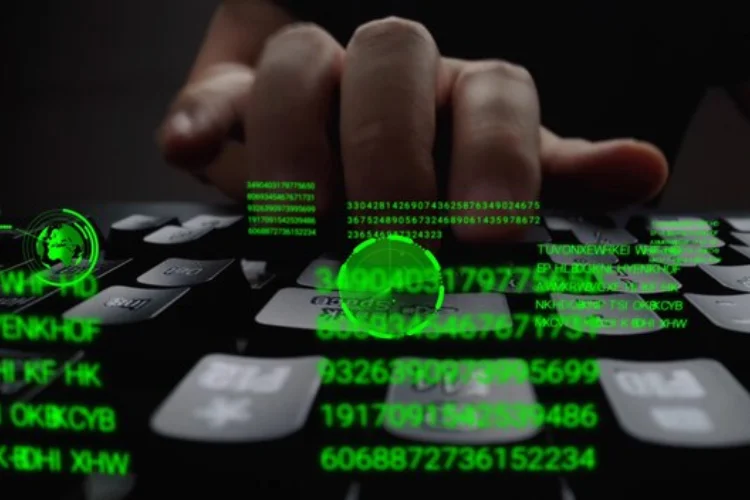Cyber Threat Detection with Top Security Techniques
The frequency of cyber attacks is surging at a concerning pace. Those days are long gone when we held the belief that data breaches are incapable of impacting our business. Enterprises in today’s era must comprehend that cyber-attacks are not avoidable and can occur to any of us at any given moment. Bearing that in mind, the necessity to detect a cyber attack is crucial for businesses. Thus, they can promptly react to these attacks.

- May 18, 2023
Types of Cybersecurity Threats
Table of Contents
Before delving into our focal point of conversation, which is how to identify cyber threats, let’s explore the diverse categories of cyber assaults that are progressively advancing with each passing day. The National Institute of Standards & Technology highlights 5 prevailing forms of cyber attacks, namely:
1. Phishing Attacks
Phishing, one of the most prevalent cyber security attacks, poses a significant threat due to its ability to mimic authenticity. It is crucial for employees to validate the origin of an email before proceeding to safeguard against such attacks. Regrettably, numerous employees fail to undertake this essential verification step.
2. Identity Theft
In contemporary times, there has been a rise in the occurrence of identity theft. What exactly is identity theft? It entails cybercriminals infiltrating company databases with the intention of pilfering customers’ personal information. An incident that exemplifies this type of attack transpired in 2013, when Target fell prey to such a breach, resulting in the illicit acquisition of credit card data belonging to over 41 million customers. These types of hackers in cyber offensives have been unfolding for numerous years.
3. Spear phishing
Spear phishing stands as a variant of phishing that directs its focus towards an individual or department in particular. Its detection poses a greater challenge compared to other phishing types due to the customized nature and adaptation of the attacks to match the victim’s profile.
4. Compromised or insecure websites
It is not infrequent for hackers to attempt to breach websites or webpages by inundating them with fabricated data or causing them to malfunction. Certain cyber offenders may even push the boundaries by implanting malevolent software on the website, leading to the compromise of visitors’ computers. Such activities can severely harm a company’s standing, necessitating substantial expenditures and time for recovery.
5. Malicious spam
A significant amount of spam messages constitute phishing scams, but even in the absence of any harm, fraudulent messages can influence a company’s efficiency. While certain email providers sift through numerous emails and sieve out messages harboring malicious software, their accuracy is not flawless. Legitimate messages may occasionally be labeled as spam, and spam messages may occasionally elude detection.
How to detect cyber Attacks
Advanced surveillance and robust IT protocols are imperative in identifying cybersecurity risks. While some businesses may opt for manual approaches, IBM’s research demonstrates that implementing security automation can significantly reduce breach expenses. On average, companies utilizing automation experience breach costs of $2.88 million, whereas those without such tools face higher estimated expenses of approximately $4.43 million. To effectively identify threats, NIST emphasizes the prioritization of the following:
1. Network Slowdown
During a cybersecurity breach, network traffic often exhibits abnormal patterns. Your system displays suspicious activities, and its performance becomes slower than usual. These clear indications suggest that your system has been compromised. If any team members report such unusual behavior, initiating your incident response plan is crucial. Even if your security team fails to discover any anomalies, conduct the scan regardless. It is wiser to prioritize preventive measures rather than regretting potential consequences later.
2. Anti-virus software
Having antivirus software installed on your personal computer can effectively identify harmful emails, malware, ransomware, and spyware. It provides a shield against an extensive array of cyber hazards. These mechanisms play a vital role in safeguarding systems, sensitive data, and networks from dubious threats by promptly notifying administrators about potentially risky occurrences.
3. Penetration testing
Testing enables organizations to identify vulnerabilities in their systems, web applications, and networks. By assuming the role of malicious actors, internal security specialists can examine their IT environments for software vulnerabilities that have not been patched, configuration challenges, authentication mistakes, and additional potential issues.
4. Threat detection logs
Numerous cybersecurity services aid organizations in recognizing nefarious actions on their systems by providing advanced logging functionalities. Cybersecurity professionals can conduct meticulous examinations of computer security and concurrent network security by upholding and scrutinizing these logs. Cybersecurity experts uphold the system’s integrity by meticulously investigating the network and system’s integrity as they review these logs.
5. Automated monitoring systems
Automated threat detection system is a unique and advanced way of detecting malicious intents within the system or network. Integrating this into your security protocol can enhance your security posture. Reviewing the device activity and performance is made easy with asset management platforms. At the same time, you can use network security monitoring tools to track web traffic in real time. So, whenever any irregularities are found within the network, these tools will alert the team and tackle the issue ASAP.
Conclusion
In conclusion, the escalating frequency of cyber attacks demands a proactive approach from businesses. It is no longer viable to hold the misconception that data breaches won’t impact our operations. Recognizing the inevitability of cyber-attacks, businesses must prioritize the detection of such threats to enable swift response and mitigation.
Understanding the different categories of cyber assaults, including phishing attacks, identity theft, spear phishing, compromised or insecure websites, and malicious spam, provides a foundation for threat awareness. Implementing robust detection methods is crucial, and a combination of network monitoring, anti-virus software, penetration testing, and automated monitoring systems can significantly enhance a company’s security posture.
By adopting proactive measures, organizations can minimize breach expenses, safeguard sensitive data, and protect their reputation in the face of evolving cyber threats.





